1881 – 1961
(Written by his children and abridged and modified to fit this site by Tony Critch) Critch)
Taken from the publication “Soldier’s Own Diary”
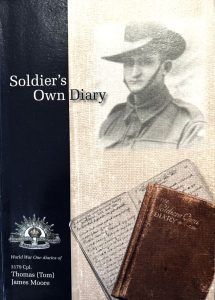
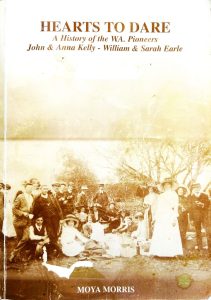
Our father, Thomas James Moore, was one of those timber-cutting log splitting new recruits from the back blocks. A keen observer of the human condition, Tom was a strong advocate for social justice. If this fact seems at odds with some of his diary observations, readers must be mindful of their historical content, the prevailing values, attitudes and beliefs of his times, and of Tom’s own background and experience.
Tom may later have come to agree with Fr Devine’s view that the “medley of khaki [was] a great leveler of social inequities”. Older than many of the others as he steps into khaki, slings his rifle, dons his brown hat and sets out for war, his war diaries reveal Tom to be a firm believer in the power of the Unions, in the political process and of the Labor movement in particular as a means to an end.
Early Life in Victoria
Tom was born in 1881 to Thomas and Mary (nee Quin(n)) at Knowsley near Bendigo Victoria the youngest of four boys and two girls. His mother, a Catholic from Corofin, County Clare, Ireland was a twin daughter of Laurence Quinn and Isonora Lynch. His father was also of Irish ancestry but born in Liverpool to James Alexander and Mary Moore and baptized Anglican.
Tom’s father arrived in Australia around 1857 and was a laborer and contract farmer at Langworner Station, Wild Duck Creek, McIvor Parish, Victoria. He was known locally as “Red Tom” –his hair color—to distinguish him from another Thomas Moore in the area.
In 1887, when Tom was seven, his father died due to the effects of alcohol. According to the Inquest documents, two doctors had refused the request of Tom’s 16-year old brother Robert (Bob) to attend (to) their farther at the farm; the family was too poor to pay.
Four months before the same doctors had hospitalized Tom’s 45-year old mother with a debilitating thyroid imbalance. Due to her prolonged hospitalization Tom and his surviving sister Bridget Margaret (Maggie), 10 were reared by family friends, the Courtney’s, on their neighbouring farm at Wild Duck Creek.
Tom did chores on the Courtney farm before and after school and walked—but sometimes rode—the 12 miles to school and back barefoot like many children. Although he left the Government school at the age of 12, Tom later continued his education at night classes.
Move to Western Australia – work in the Timber Industry
At the turn of the Century and just after Federation, Tom acted on his brother’s advice and followed him to Western Australia to take up employment in the Timber Industry. In 1904, Western Australia had 35 Timber Mills. The mines, the burgeoning West Australian population and a spreading Railway System had created a strong demand for timber, especially for karri and good quality hardwood used by the government for bridges, jetties and railway sleepers.
Unionist to Labor Politician
A Trades and Labour Council had been established in Western Australia in 1891 and Trade Unions were officially legalized in Western Australia in 1901. A little over a decade later there were 166 Unions and an estimated 40.90% of the Western Australian male workforce belonged to a union. At a time when the Western Australian Movement was still in its infancy, Tom was the Timber Workers Union representative for Nanga Brook and, later, for Marrinup. He was a Trustee by 1913. He was elected General President of the Amalgamated Timber Workers Union in 1914-16, a delegate for the State and Interstate Conferences and a Federal Councilor.
Tom was actively engaged in politics and from 1909 was a member of the Western Australian Division of the Australian Labour Federation. In 1913, when Mr Peter L O’Loghlen resigned as the Labor MLA for Swan to contest Sir John Forrest for the Senate Seat of Swan, Tom easily won the selection for Forrest against strong opposition. He held that seat until O’Loghlen returned to WA (politics). Tom resigned his position to allow O’Loghlen to seek re-election to the Forrest seat.
Following the outbreak of war in Europe on the 4th of August in 1914, Tom was outspoken in his opposition to the Prime Minister William Hughes and his Federal Labor Government push for Military Conscription. Just prior to the rejection of the Conscription Debate the Geraldton Express reported that:
Tom Moore…..led a detachment of Laborites into Blackboy Camp a few days after the first Referendum…was taken and when a No majority was assured. Tom was an ardent opponent of the compulsory measure, and toured the country at his own expense to bring about its defeat. When he had affected his purpose, in order to demonstrate his loyalty to Britain’s cause and to manifest his desire to further the voluntary system, he enlisted, and influenced about one hundred others to follow his example
World War 1
At the time of his enlistment (October 1916) Tom was recorded as being 35 years and 9 months old, of fresh completion, with brown eyes and hair, and with a scar on his chin, weighed 145 pounds (66Kg) and was 5 feet 9 1/2 inches (176cm) tall and had a chest measurement of 32-35 inches (81-89cm)
Tom embarked at Fremantle aboard the Barrima on the 23 December 1916 as a member of the 8th Battalion Australian Imperial Force.
Among the many letters Tom wrote which took many months to reach Australia, he revealed, in the January 1918 he was ”at latest dodging Fritz’s shrapnel” and “had many narrow escaped”. However participation in the fighting at the Western Front ended for Tom at the battle at Dernancourt—Albert in defence of Amiens for on the 5th of April 1918, he sustained severe wounds to his face and right shoulder.
Tom was evacuated to England for treatment and spent some time recovering there before returning home. He reports from his comprehensive diary encompassing the convalescing period that on the 3rd of August 1918 he attended the opening of Australia House. He mentions King George speaking with him and asking him a “foolish question or two”. He suggested “King G looked bored to death” but the Queen (Mary) “looked her part”
Return to Western Australia, Indarra farm, family and politics
When Tom returned to Western Australia he had further medical treatment before being discharged from the Army on the 5th of August 1919. His Brother Bob also survived the war and returned to Western Australia in the May of 1919.
Tom was selected in April 1920 to contest the Election for the Western Australian Parliament’s Legislative Council seat of Central Province. Tom won that seat in May 1920.
In November 1920 Tom, with his brother Bob, took up land at Indarra, (6 Ks west of Tenindewa) a railway siding 23 kilometres west of Mullewa and situated centrally in Tom’s electorate.
Tom met 30 year old Geraldton nurse, Everlyne Kelly, in 1922 and they were married on Christmas Day, 1922in the Stella Maris Convent Chapel, Geraldton. A daughter, Moya, was born in October 1923 and son, Thomas, February 1925. Everlyne died on the 1st of March 1925 a few days after the birth of Thomas
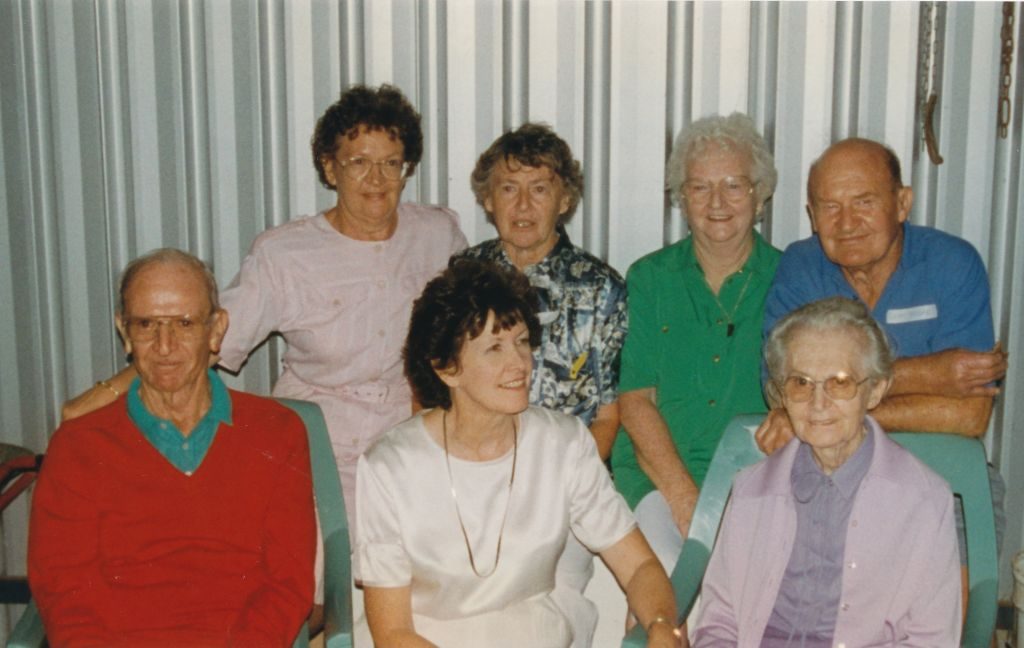
Back; Philomena, Colleen, Sheila and Gavin Front; Phil Bunter, Lorraine and Moya.
Moya (Morris) also produced a book: Hearts to Dare a history of the W.A. Pioneers. Available from the Geraldton Library.
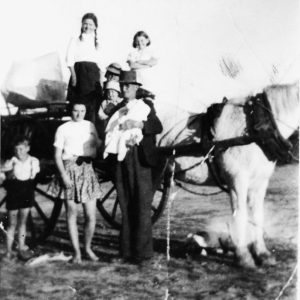
Tom nursing Philomena, Back; Sheila and Collene. Middle; Glady and Gavin. Front; Robin and Moya; This horse and cart ensemble was still operational at Kelmore into the 1960s
Tom lost the 1926 election.
On the 27th of August 1929 at St Francis Xavier’s Cathedral, Tom married Gladys Kelly aged 22 years, the youngest sister of Evelyne, who along with her mother had been looking after young Tom and Moya.
Tom became the State organizer for the ALP, and at the May 1932 elections he regained the seat of Central Province which he held until his retirement in 1946.
Tom and Glady had seven children; Sheila, Colleen, Robin, Gavin, Philomena, Loreta and Lorraine.
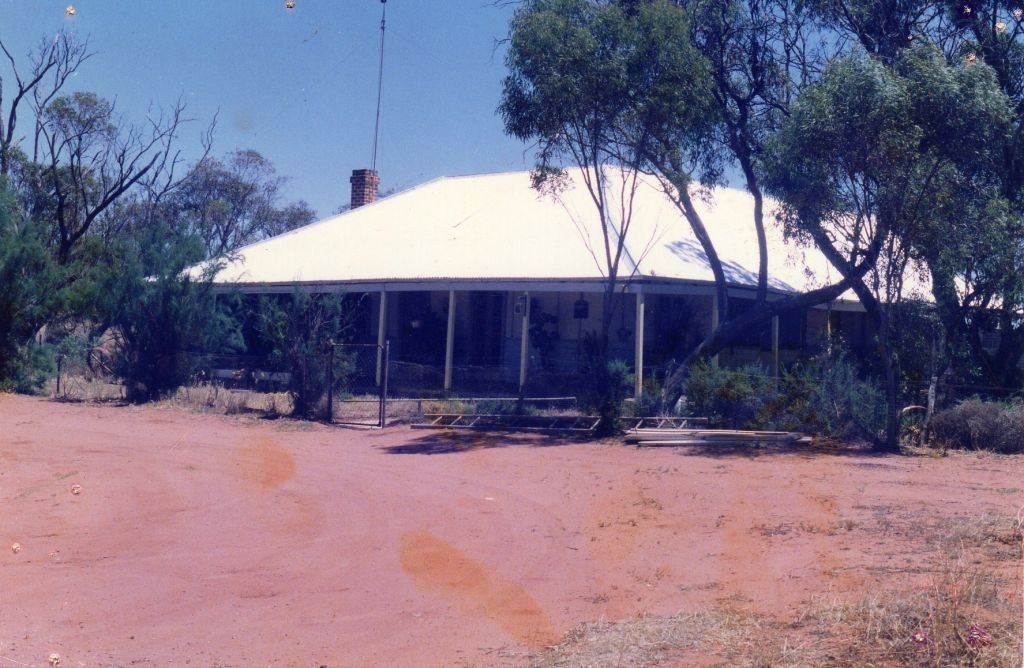
Kelmore Homestead 1990
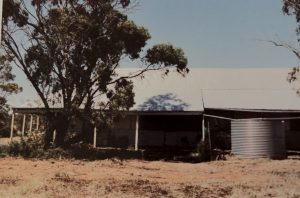

Glady on 27th August 1929
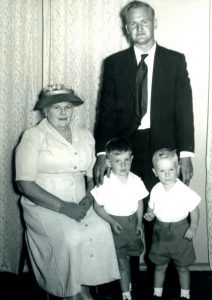
Glady, Michael and John. Their father Gavin at back.
Award Winning Farming
The farm at Tenindewa had prospered and Tom entered the MT Padbury Competition for growing wheat (A State wide competition) He won the trophy outright in 1940/41 by way of the fact he had previously won it in 1935 and 1938. (Those prestigious trophies are still in the safe keeping of his grandson Murray).
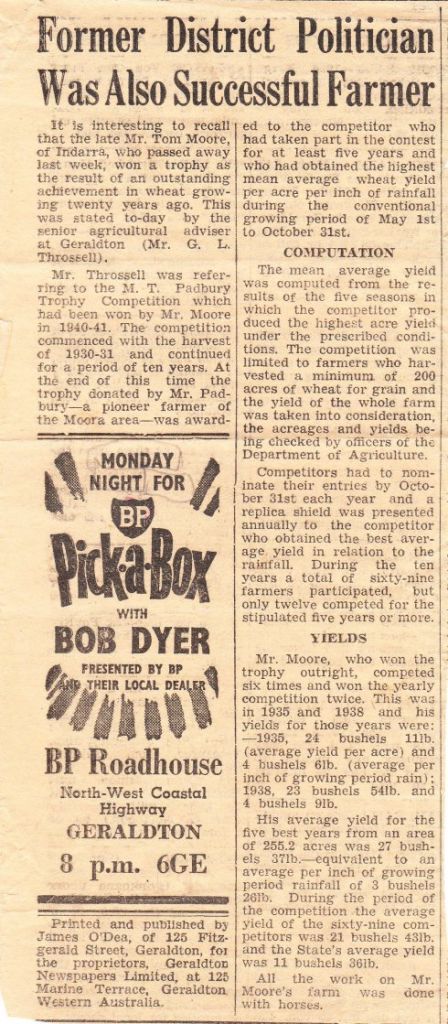
Tom continued farming at Tenindewa after his retirement. He was in frail health for some years before his death on the 31st January 1961. He was survived by Gladys and 9 children and 11 grandchildren. Gladys died on the 4th of August 1980
The farm was 5 kilometres down Moore Road which runs south from the Geraldton / Mt Magnet Highway.
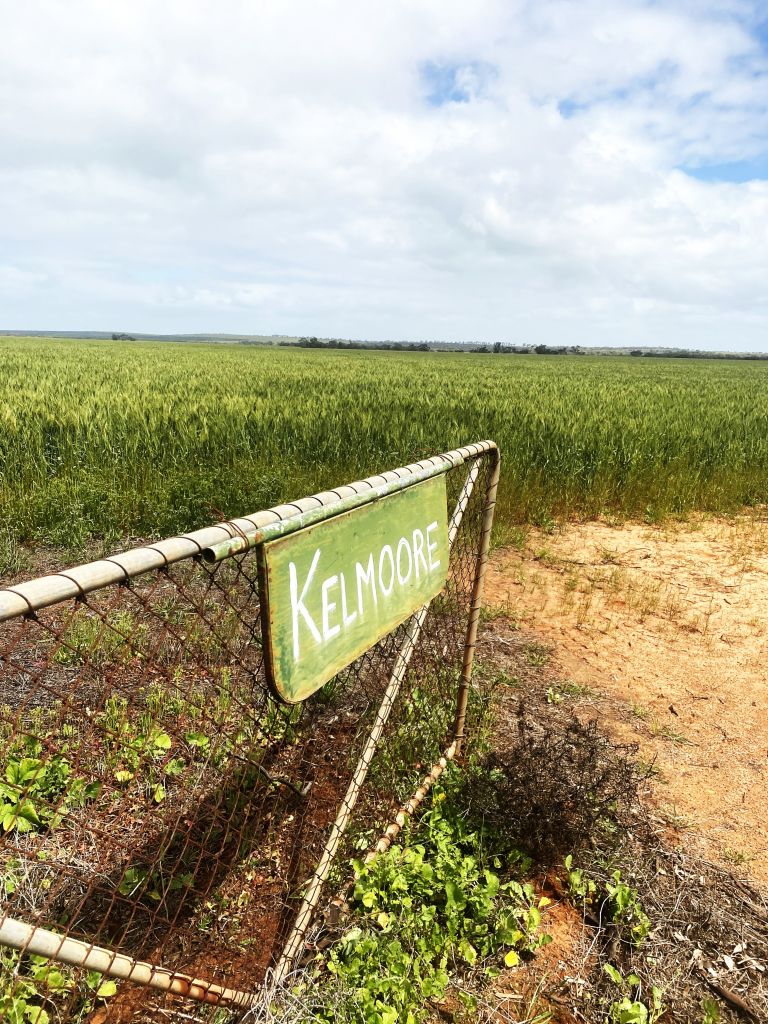
Kelmore Gate still exists
During Tom’s parliamentary life and from a Tenindewa point of view it must have been quite extraordinary for local folk that they had not one but two Labor MLAs and both living at Indarra. Michael Troy MLA (Member for Mt Magnet) served from 1904 through to 1939. He successfully farmed there and incidentally he also built a substantial house (for its time) which still stands and is occupied to this day. He held many port folios including Minister for Immigration, Agriculture and Lands and was acting Premier on three occasions. He subsequently served as Western Australia’s Agent General to London for many years
In terms of recruits from the district of Tenindewa for the war in which Tom served (The Great War) we know of at least two more that volunteered but were not as fortunate as Tom to return as they made that ultimate sacrifice. Memories of a Migrant by Kathleen Palmer notes:
“Lew Stafford and a chap who was working for them Bert Jones decided to enlist. Those boys wanted to kiss us girls goodbye but because of our reserved upbringing we would not let them. Looking back how I regret that decision as Lew and Bert were soon blown away”.
Lew and Bert lived and farmed about 9 Kilometers down the Tenindewa/Yuna road.
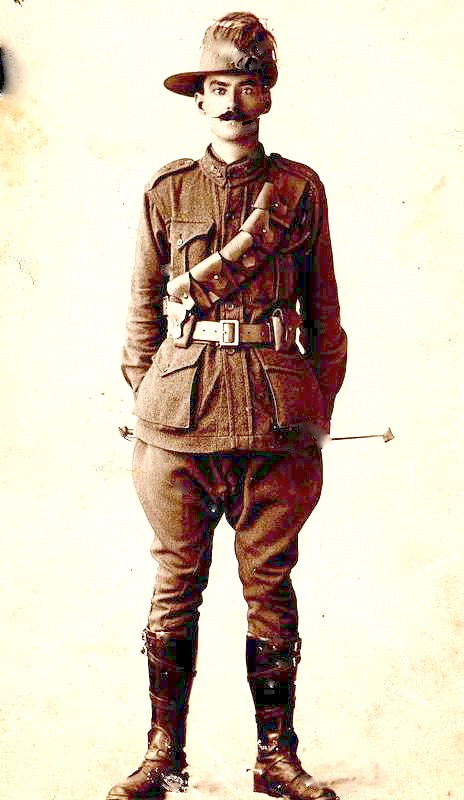
Lewis Harrington Stafford. Aged abt 26. Going off to WW1 Feb 16th 1916 on the ship SS Warulda. It was Eva’s birthday. 1500 men and Officers on board. i have his war diary x 2. He died whilst on duty in Zonnebeke Belgium France.. Monday 8th October 1917. His final mission was with the 110th Howitzer Bty 10th F.A. bgde 4th Autsralian Division.
Out of an Australian population of just 4 million, 416,809 volunteered, 166,811 were wounded and an incredible 59,000 died.
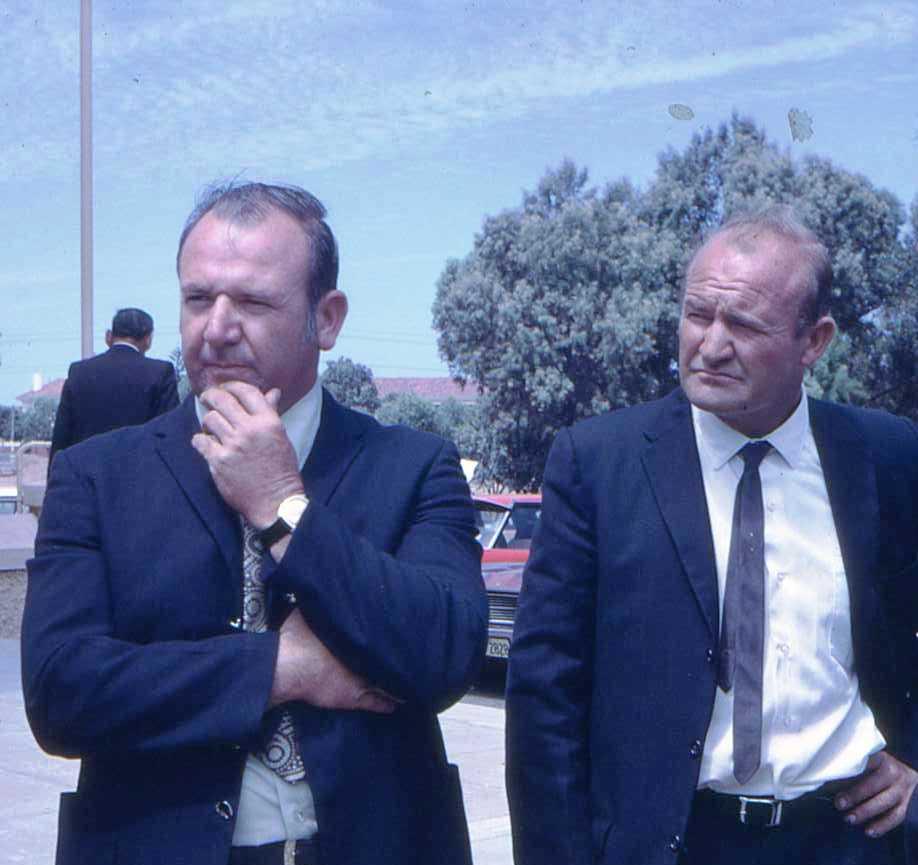
Robin and Gavin in about 1970
After the passing of Tom snr both Gavin and Robin in that order had a hand in running the property. Robin and wife Carol were the last of the Moore’s to live there and after Carols passing in 1977 Robin toiled on until his health failed and he sold the property in 1997.

Tom Moore at Williamsons about 1957 (extreme right) Charlie Critch at extreme left of photo
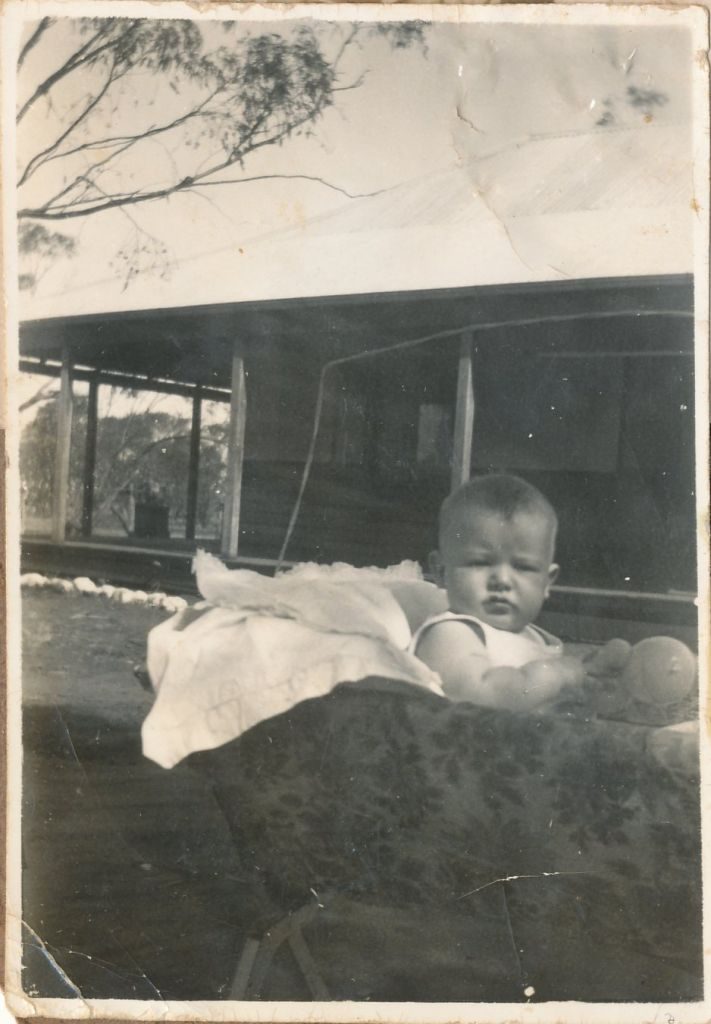
Gavin outside the of the Indarra farm house. Maybe 1930
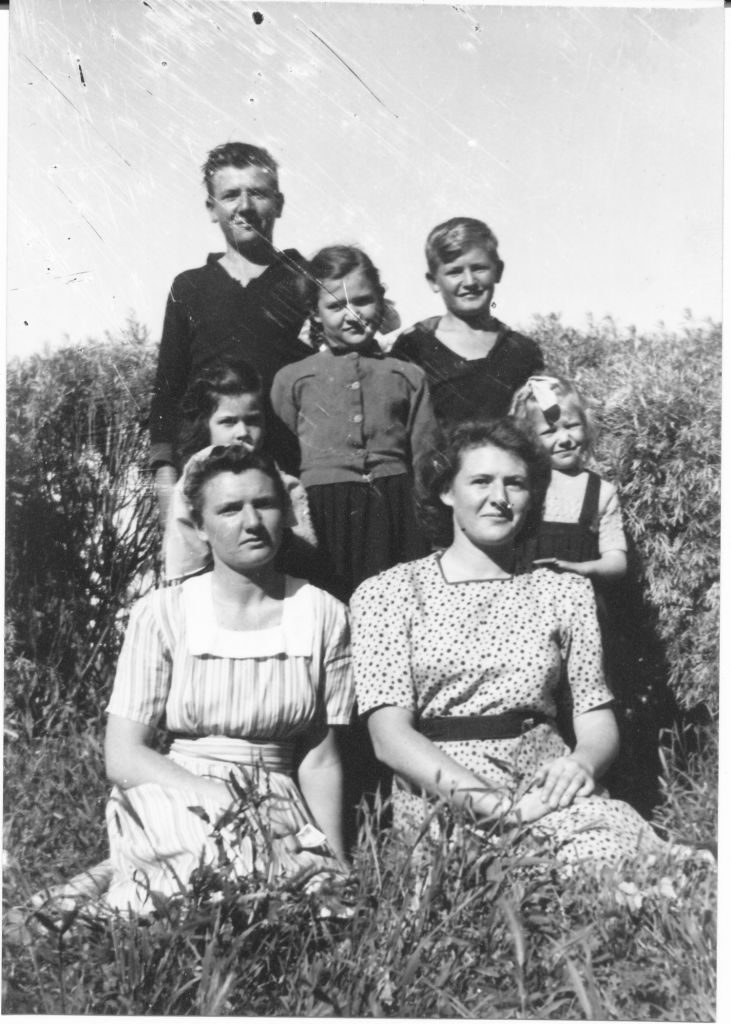
Robin and Gavin at back Philomena centre Lorraine and Loretta (the twins) with Sheila and Colleen at front. Picture taken about 1951
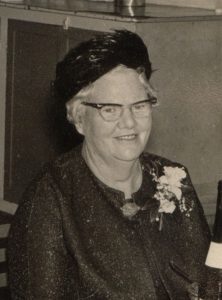
And Glady again
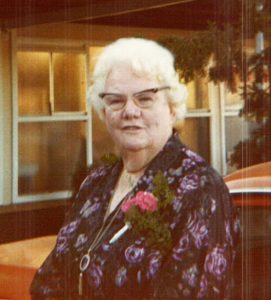
The remarkable Glad
Related Articles
May 26th 1920
Tenindewah [sic] Notes (From our Correspondent)
Congratulations to Mr. Tom Moore for his meritorious win in the electioneering contest. Tenindewa did her bit by voting straight out Labor. Improving aren’t we? “Lord save us” said Mrs. Davis. There will be “some please explains” circling around the cocky districts for the Farmers and Settlers meetings, I’ll bet.
While on this election stunt, I will with your kind permission relate how I got a vote for Tom Moore. I was canvassing out back. Going into a farmhouse, I met a man, who in my mind was, “Dad on our Selection.” How Darwin missed him is a conundrum.
Here goes to describe him. About 6 feet [1.8 meters] high and his age I defy the Government Veterinary Surgeon to prove no hat on; and, as his rusty coloured hair hadn’t seen Joe Ryan for at least two years, it puts me in mind of a sheaf of Federation wheat; beetled eyebrows, with projecting knots like doublegees; sandy-blight eyes ; ears like saddle-flaps, with a nose on his face like my boot. Picture three inches of barbed wire, then you have his moustache, likewise a stable broom for his whiskers. To finish up politely his mouth could be termed a trench. He was smoking a broken stump of a pipe, and the dribbles that came from his mouth and nose would water a team of horses for a fortnight.
Anyhow I wasn’t going to retreat. I wanted his vote so got off the mark, explaining how he had enough Stone on his roads with Cars-on too, all he wanted was Moore ballast, and by voting Labor he would get that, for the candidates had plenty of grit and would shovel it out in Parliament. “Vote for Labor!” said Mr. Deatherlip, “not me. If I do, up goes wages.” “Enough of all that, digger” I said, “I have heard that whinging from every cocky for the last ten years. That is the only gag you cockies can put up against Labor. Here! Can you dispute that the Scadden Government did more for the cocky than any other Government before or since? Weren’t you, before you became a farmer, a labourer yourself? Didn’t you want fair wages? Put this motto into your brainbox –“Feed a horse well; pay a man well; never keep a drone in either class; then you will get good work done.! You farmers amuse me. Pay good wages, you won’t but, you will let some agent tear the lining out of your purse, paying exorbitant prices for machinery, etc., etc., and say nothing. But I’ll chuck you that in about wages. That’s not mentioned in Mr. Moore’s platform. He is only out to keep down the cost of living . “Now that’s better” said the cock. “I want to do another acre before I knock off to vote. Just answer me these questions and maybe I will vote for your man. Is he skinny or fat.” “Medium ” I answered. “Is he a big eater” “Holy Mosses! I wonder what he is driving at” and as I did not know how to answer him, I took a risk and said “Very poor. I have known him to live on sixpenny worth of prawns for two days. “Good enough” he said. “off you pop, I’ll vote for him; he’s the chap.” And when I asked him his reasons, he got quite wild, and said: “Don’t you read the papers? Hasn’t Jimmy Mitchell and his mob been eating up (banquets) the surplus; haven’t they eaten up everything the voter will pay for except kangaroo skins? Hasn’t he just come up to Geraldton, drunk up Major Kempton’s water scheme and gone back to tackle the skins; so if he gets any reinforcements with corporations and appetites like himself, Jack Scadden, Colebatch and Co., they’ll soon gobble up everything, and the only jam left for the cock will be jam trees. Good-day. Yes I’ll vote for Moore certain.”
Football started last Sunday week. Devil’s Creek beat Mullewa. Last Sunday we played Devil’s Creek, and, characteristic of the enthusiasm of the enthusiasm shown here in sport s, only nine players put in an appearance, and then we were only beaten by four points.
Oh; I forgot to tell you–well, in truth I was ashamed–that at the finish of the cricket season a combined team–Mullewa, Devil’s Creek and Tenindewa went to Walkaway to return the compliment. Walkaway paid us swank going down. You should have seen them! The champion bowler of the district wearing his medal too. No trains for them–motor cars, if you please. this was going down. Was coming up different, did you say? Wasn’t it; Some walked back, others slunk back, some not back yet, for the whole combined team only made ten. Cullerton and Connolly mowing them down like thistles–5 for 2 and 5 for 8 being their averages. “Lest said soonest mended.” I live in Tenindewa. Walkaway made 100. Would have been in yet only its seeding time and they thought they would not keep our fellows away too long.
I think Tenindewa is going to hop along some, as Mr. Benoit has just had erected as nice a villa as anyone could desire. Mr. R. Oldham has another nearing completion, and I believe two liggers. [sic]
I’ll be laying foundations for two more next month. More votes for Labor shortly, etc.
Rains have come nicely this year. If they are as good at the end, well the result will be, of course, a bumper harvest.
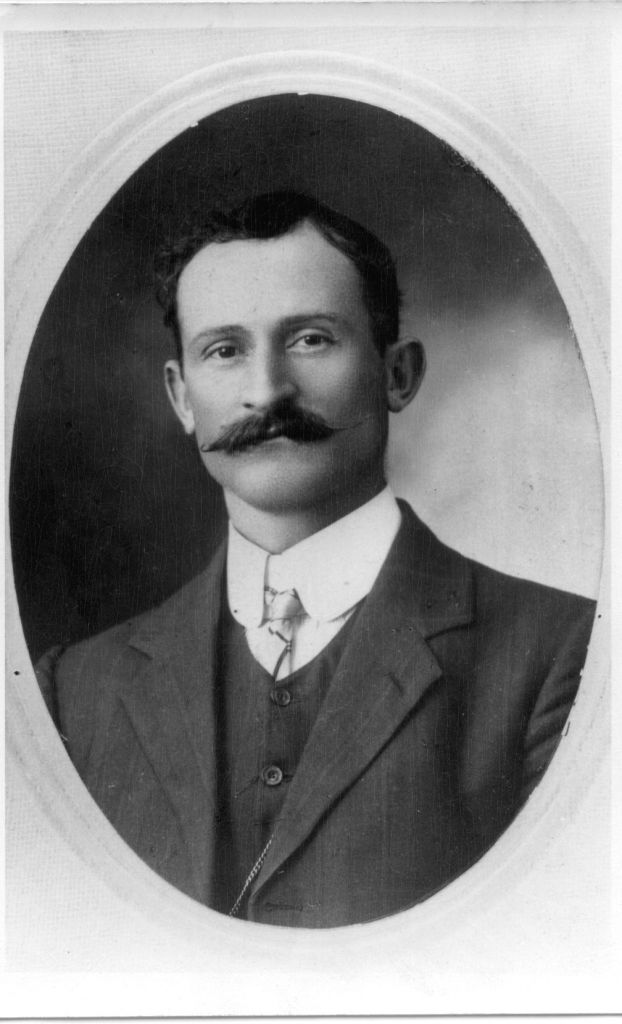
Comments
The following information is incorrect: “His mother, a Catholic from Corofin, County Clare, Ireland was a twin daughter of Laurence Quinn and Isonora Lynch. His father was also of Irish ancestry but born in Liverpool to James Alexander and Mary Moore and baptized Anglican.”
A very interesting read to follow what Tom did after tree felling with my Grandfather. I note with interest that with Tom’s second marriage, it was in the same cathedral that my parent’s Roy Pight and Jane Hackett we’re married in 1941 and where I was baptised.